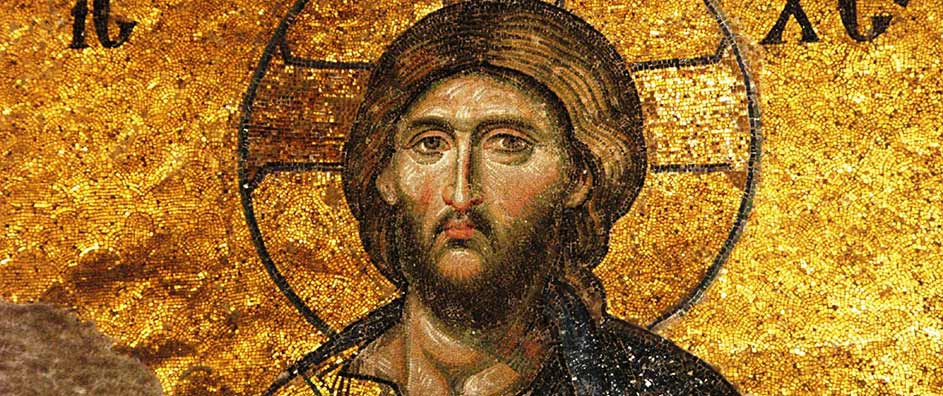The views expressed in our content reflect individual perspectives and do not represent the authoritative views of the Baha'i Faith.
For to us a child is born, to us a son is given, and the government will be on his shoulders.
And he will be called Wonderful Counselor, Mighty God, Everlasting Father, Prince of Peace. – Isaiah 9:6
I was raised a Christian, and I was always taught that Jesus is the only way to God. Years later, I became a Baha’i. Before I did, I had to work out this “Jesus-only” training I received as part of my impressionable childhood and teenage years.
While investigating the Baha’i Faith — especially Baha’u’llah’s truth-claims — I always feared that I’d somehow forfeit my salvation. To modify or change my beliefs risked a lot, to put it mildly.
It came down to this question: Can I believe in Jesus Christ and Baha’u’llah at one and the same time, and if so, how? Abdu’l-Baha answered a similar question:
You have asked me two questions: “That if the same spirit is manifest in all the Manifestations and Prophets, then what is the distinction or difference between Christ (or rather Jesus) and the other Prophets; also [what is the difference] between Father and Son?”
Know that the human spirit is one, but it manifests itself in various members of the body in a certain (measure or) form. The human spirit is existent in the sight (eyes); it is also existent in the brain, which is the location of great functions and powers; it is also existent in the heart, which organ is largely connected with the brain or the center of the mind, and the heart, or that center which is connection with the brain, has a distinct and separate function, effect and appearance…
Figuratively speaking, the Father is the center of the brain and the Son is the center of the heart; the rest of the Prophets are members and parts. Fatherhood and Prophethood, in this case, are two expressions of the same thing, as man and creature are two names of the same reality. The word “man,” however, is greater than the word “creature” because it bears a weightier meaning than the name “creature”; both are the same. – Tablets of Abdul-Baha, pp. 102–103.
In this remarkable passage, Abdul-Baha, when referring to “the Son,” means Jesus Christ. Similarly, “the Father” refers to Baha’u’llah.
“What?” you may exclaim, in righteous indignation? “I always thought the ‘Father’ was God and God alone!” Yes, you’re quite correct. But I invite you to take a second look at the prophecy from Isaiah 9:6, quoted above. This passage, widely known as the “Yuletide prophecy,” suggests, by implication, that the “Everlasting Father” cannot logically be the “Son of God”—a basic cornerstone of Trinitarian theology and a bedrock belief in what systematic theologians sometimes refer to as “high Christology.”
In his “Tablet to Pope Pius IX,” Baha’u’llah makes this claim:
O concourse of monks! The fragrances of the All-Merciful have wafted over all creation. Happy the man that hath forsaken his desires, and taken fast hold of guidance. He, indeed, is of those who have attained unto the presence of God in this Day, a Day whereon commotions have seized the dwellers of the earth and filled with dismay all save those who have been exempted by God, He Who layeth low the necks of men.
Adorn ye your bodies whilst the raiment of God is stained with the blood of hatred at the hands of the people of denial? Issue forth from your habitations and bid the people enter the Kingdom of God, the Lord of the Day of Judgement. The Word which the Son concealed is made manifest. It hath been sent down in the form of the human temple in this day. Blessed be the Lord Who is the Father! He, verily, is come unto the nations in His most great majesty. Turn your faces towards Him, O concourse of the righteous!
O followers of all religions! We behold you wandering distraught in the wilderness of error. Ye are the fish of this Ocean; wherefore do ye withhold yourselves from that which sustaineth you? Lo, it surgeth before your faces. Hasten unto it from every clime. This is the day whereon the Rock crieth out and shouteth, and celebrateth the praise of its Lord, the All-Possessing, the Most High, saying: “Lo! The Father is come, and that which ye were promised in the Kingdom is fulfilled!” This is the Word which was preserved behind the veils of grandeur, and which, when the Promise came to pass, shed its radiance from the horizon of the Divine Will with clear tokens. – Baha’u’llah, The Summons of the Lord of Hosts, pp. 58–59.
Now let’s quickly apply the Four Steps for figuring out prophecy to the Yuletide Prophecy of Isaiah 9:6:
Step 1: If impossible, then not literal.
This prophecy isn’t literal, because the “Everlasting Father” cannot be God if the birth mentioned in Isaiah’s prophecy is human: “For unto us a child is born, unto us a son is given.” (Isaiah 9:6.) Most Christians think the “the Son” here means “the Son of God” (Jesus Christ). But “the Son of God” cannot be one and the same as the “Everlasting Father.” Yes they are “one” in spirit, but not identical.
Step 2: If not literal, then figurative.
Abdu’l-Baha offers the important insight into the analogy expressed here: “Figuratively speaking, the Father is the center of the brain and the Son is the center of the heart; the rest of the Prophets are members and parts. Fatherhood and Prophethood, in this case, are two expressions of the same thing.” In other words, we can interpret “the Father” figuratively, not literally.
Step 3: If figurative, then symbolic.
As for the qualities this symbol represents, “the government shall be upon his shoulders” is one of the functions of the symbol of the “Everlasting Father.” This government is likely to be a world self-government, especially since the “Everlasting Father” is also the “Prince of Peace.”
Step 4: If symbolic, then spiritual and social.
Abdu’l-Baha applies the Yuletide prophecy to Baha’u’llah as the “father.” Baha’u’llah makes this claim directly: “The Word which the Son [Jesus Christ] concealed is made manifest. It hath been sent down in the form of the human temple in this day. Blessed be the Lord Who is the Father! He, verily, is come unto the nations in His most great majesty.”
You can see how Baha’is can revere Christ as heart (“the Son is the center of the heart”) and Baha’u’llah as soul.
















Comments
Sign in or create an account
Continue with Googleor